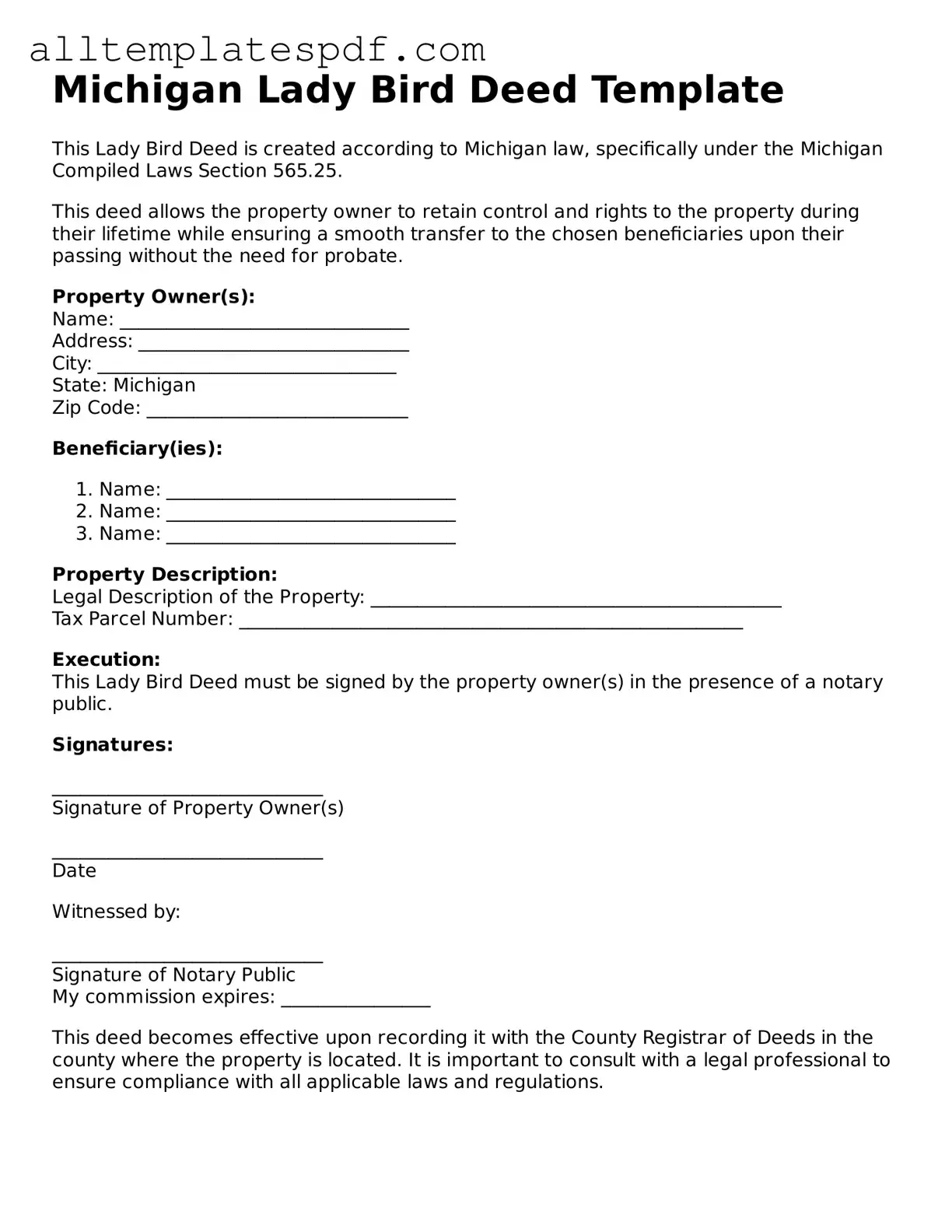Filling out the Michigan Lady Bird Deed form can be a straightforward process, but many individuals stumble along the way. One common mistake is failing to include the legal description of the property. Instead of just listing the address, it’s essential to provide a detailed legal description. This description is crucial for ensuring that the deed is valid and accurately reflects the property being transferred.
Another frequent error is neglecting to identify all the beneficiaries clearly. It's not enough to just name a beneficiary; you must also specify their relationship to you and ensure that their names are spelled correctly. Omitting or misspelling a beneficiary's name can lead to complications down the line.
People often overlook the importance of signing the deed in front of a notary. This step is not just a formality; it adds a layer of authenticity and legality to the document. Without a proper notarization, the deed may not hold up in court or during property transactions.
Additionally, some individuals mistakenly think that a Lady Bird Deed is the same as a will. While both are estate planning tools, they serve different purposes. A Lady Bird Deed transfers property while you’re still alive, allowing you to retain control over it. Confusing the two can lead to improper planning and unintended consequences.
Another common pitfall is not considering tax implications. A Lady Bird Deed can affect property taxes and potential capital gains taxes. It's vital to consult with a tax professional to understand how this deed may impact your financial situation.
Many people fail to review the entire form before submission. Rushing through the process can result in overlooked details or errors. Taking the time to double-check every section ensures that all information is accurate and complete.
Lastly, individuals sometimes forget to inform their family members about the Lady Bird Deed. Communication is key in estate planning. If your loved ones are unaware of the deed and its implications, it could lead to confusion and disputes after your passing. Ensuring that everyone is on the same page can help prevent misunderstandings in the future.
